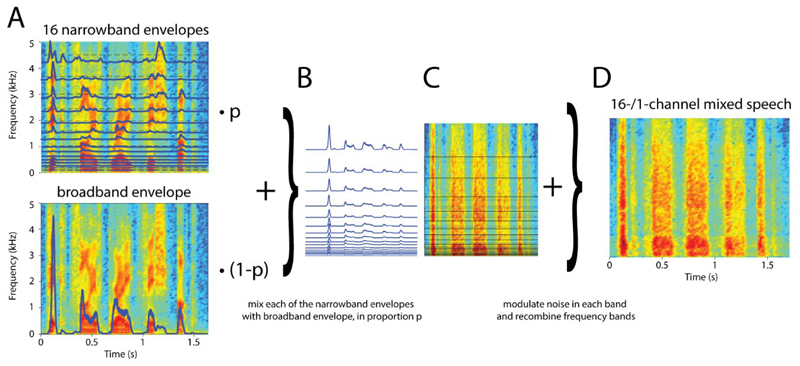Figure 2. Stimulus construction.
A. For each of the clear speech sentences (spectrogram for one example sentence is color-coded and shown in both panels), amplitude envelopes (blue lines) were extracted for 16 frequency bands (top) as well as the broadband signal (bottom). B. Each of the 16 narrowband envelopes was mixed with the broadband envelope in proportion p (0.5 for the example shown in B-D). C. Each of the resulting envelopes (shown in B) was used to modulate noise in the respective frequency band. D. The resulting signals were re-combined to yield a 16-/1-channel vocoded speech mix. For this form of vocoded speech, high values of the mixing proportion (p = 1) results in 16-channel vocoded speech which is highly intelligible, low mixing proportions (p = 0) results in 1-channel vocoded speech which is entirely unintelligible. Intermediate proportions result in intermediate intelligibility.

